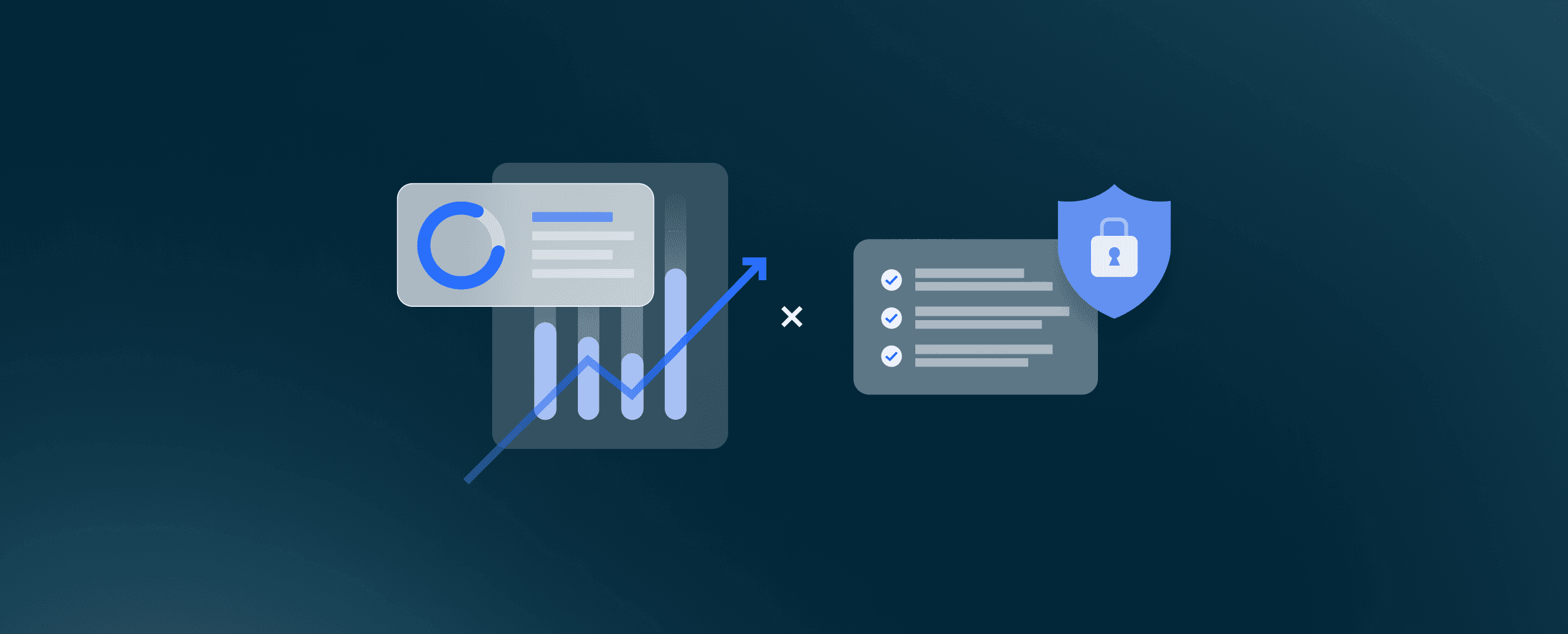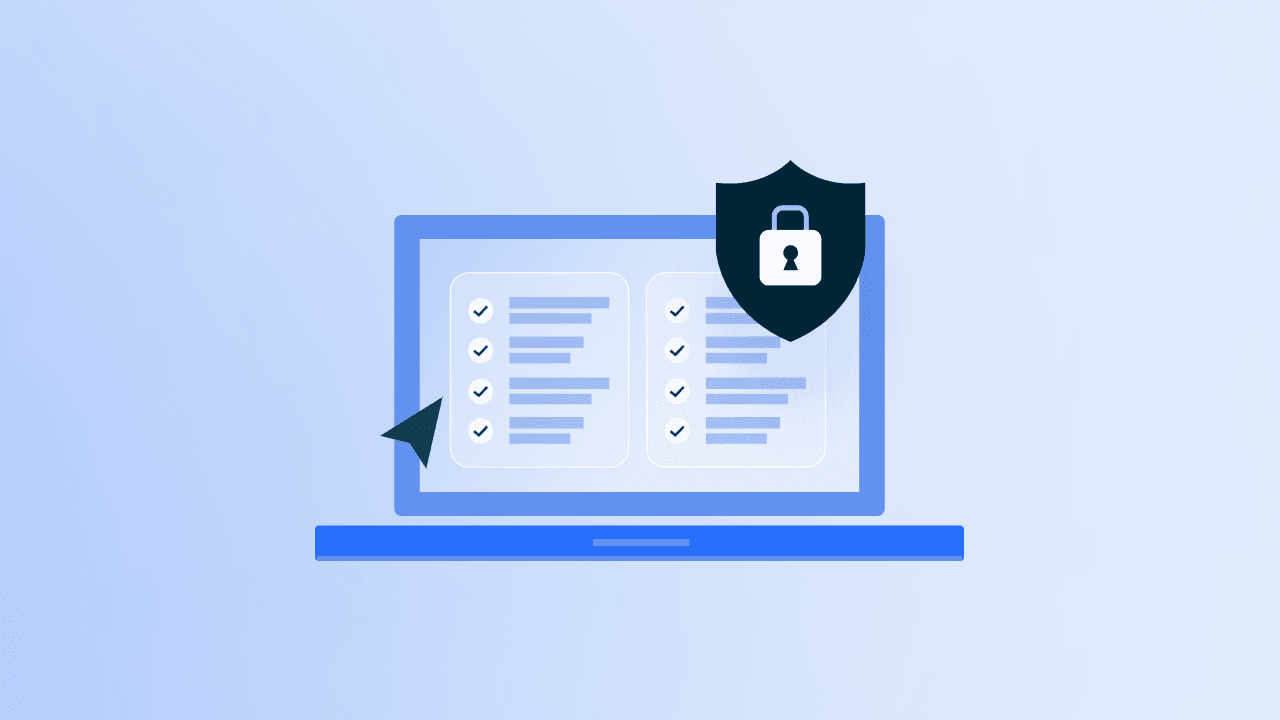Growth vs. Governance: The GRC Balancing Act
While your sales and marketing teams ramp up activities, your compliance team may need your product and security teams to provide additional documentation or integrate additional frameworks. This tension between rapid growth and new governance requirements can feel painful, but it doesn’t have to be.
Businesses have growing pains, just like people do. As your body grows, bones, muscles, and ligaments stretch, often coming with painful twinges everywhere. In business, the same thing happens in the form of new processes and technologies. Those twinges of pain, sometimes in the form of new compliance requirements, indicate revenue and market share growth.
While your sales and marketing teams ramp up activities, your compliance team may need your product and security teams to provide additional documentation or integrate additional frameworks. This tension between rapid growth and new governance requirements can feel painful, but it doesn’t have to be.
When you build compliance into your business strategy from the beginning, your governance capabilities can augment your business growth.
Balancing the Governance Costs and Benefits
As customers increasingly want digital experiences, nearly every business is an IT company. In competitive markets, speed is often a differentiator, yet compliance can feel like a weight slowing teams down.
Agile Development vs. Manual Compliance Processes
Agile development processes enable innovation by focusing on incremental software development so that organizations can respond to changing customer needs. By focusing on delivering a specific set of features, typically within two to four weeks, agile processes enable businesses to capitalize on market trends, gaining a competitive edge through innovation.
Implementing a secure software development lifecycle (SSDLC) is basic table stakes for any modern business delivering customer-facing applications. However, many organizations struggle with manual documentation processes that slow down development teams and limit product innovation. According to the State of GRC 2025 report, 45% of respondents are worried about balancing compliance and innovation.
Time to Market vs. Time to Audit
By breaking the development process into smaller and more manageable tasks, agile teams improve time to market (TTM) for their products. A faster TTM means that the company generates revenue faster, improving cash flow and profitability.
Compliance again seems to slow the organization down and hold teams back. Many organizations use independent third-party audits, like a SOC 2 report, to prove governance over their security program. However, when teams spend time documenting processes or gathering audit materials, it delays audit completion and increases TTM by pulling them away from their core responsibilities. With 83% of the State of GRC respondents stating they use a mix of automated and manual compliance processes, most companies can add new automation to reduce compliance’s impact.
Sales Cycle vs. Customer Procurement Process
The shorter the sales cycle, the faster the organization generates revenue. The sales team can improve the sales cycle with clear proposals, timely responses to prospect questions, and anticipating objections. However, many business-to-business (B2B) organizations struggle to respond to customer security questionnaires in a timely fashion. Prospects need to follow their internal third-party vendor risk management requirements which typically come with a specific questionnaire that vendors need to use. While Drata’s research found that 38% of companies say the primary focus of GRC programs is business growth, the manual security questionnaire process continues to act as a barrier to achieve these objectives.
Shifting Compliance Left: Integrating GRC into Business Growth Strategies
The State of GRC report found that 99% of organizations have already shifted left, are in the process, or plan to in the next 12 months. Integrating compliance processes into development can enable cost reductions by identifying and remediating security and compliance issues sooner. These best practices can act as a foundation for organizations integrating GRC initiatives into their business metrics.
Create a Central Hub for Compliance Activities
Various people across your company use compliance information to do their jobs, including:
Compliance teams who need to gather audit documentation.
Sales teams who need to provide prospects answers to security questionnaires.
Developers who need to monitor and test continuously across the entire software development lifecycle.
Senior leadership teams who need to know their current security and compliance posture.
With a central compliance hub, you can give people access to the information they need and limit their access to protect sensitive data.
Build Business Growth Objectives into Risk Mapping
While every organization’s risk tolerance is different, most companies face similar security threats. By using a pre-loaded risk register focusing on common threats, you can implement security controls and then map them to the compliance mandates and frameworks your business needs.
As your business expands into new regions and industries, you can more easily map these controls to new compliance mandates and frameworks. Further, by using standardized controls, you can identify potential gaps as you implement these new compliance requirements, enabling your compliance program to grow at the same rate as your business operations.
Build Compliance into Development Processes
Shifting security left focuses on SDLC security, and your compliance program needs to have the appropriate documentation. Proactively enforcing controls during development enables you to more rapidly address compliance and security gaps.
You can prove SDLC security by integrating all cloud technologies into your compliance monitoring, including infrastructure-as-code (IAC) and developer tools. Incorporating automatically generated, detailed pull requests into your compliance processes enables you to document:
Control context
Issue location directly in the code
Recommended fixes
Since developers never need to leave their dev environment, they can prioritize compliance and address issues without impacting delivery times.
Incorporate AI to Accelerate Sales Cycle
When your sales team can leverage AI to respond to security questionnaires faster, they can close deals faster. AI excels at taking in large volumes of data and summarizing it, making it the perfect tool for automatically generating responses to lengthy security questionnaires.
While customers may have different language for their questions depending on their compliance requirements, the general information will be the same. After mapping your security controls to the different threats your company faces, AI can pull compliance and security data from your source of trust for efficient and accurate responses, reducing the burden on different departments who typically work on these questionnaires.
How Drata Helps Balance Business Growth and Governance
Drata’s GRC platform makes customization easy so you can implement a compliance program tailored to your business operations and risk. Our platform provides:
Custom risk scoring so you can define and configure your risk scores and thresholds to your business needs.
Risk drawer that allows you to edit and add risk data, including descriptions, categories, owners, documents, and impact.
Automated treatment plans based on your unique risks’ impact and likelihood.
Custom frameworks so you can easily and quickly bring in requirements related to your unique business needs.





